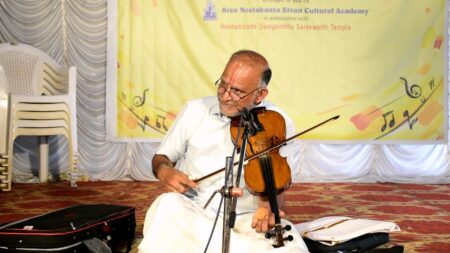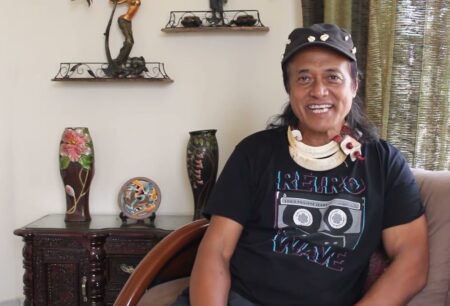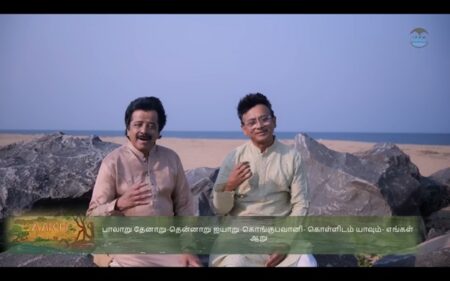One of India’s self-made music icons, Remo Fernandes, bares it all in his autobiography
What is an autobiography? Typically it is a narration of one’s life mostly described in a chronological manner. These tomes give a glimpse into the writer’s life and, if lucky, readers are treated to a little bit more than just a glimpse. Musician and singer Remo Fernandes, in Remo: The Autobiography of Remo Fernandes (HarperCollins India), generously shares his life and offers more than just a sneak peek – for Remo has described his life and peppered the autobiography with subtle yet chucklesome humour.
Those who grew up in the 1990s in India know Remo as the playback singer of some popular hits such as Hamma Hamma (Bombay), Pyar Ka Signal (Bhagam Bhag), the title track of Pyaar To Hona Hi Tha and the Dekho Dekho Yeh Hai Jalwa (Jalwa). However, his true gems lie in Konkani folk songs such as ‘Ya Ya Maya Ya’, ‘Maria Pita Che’ and ‘Soiri’ and albums such as ‘Goan Crazy’ and ‘Old Goan Gold’.
The Beginning
In Remo’s own words, he treated the autobiography as a “reminiscence of my personal life, rather than a detailed recounting of my professional one”. Remo begins at the beginning – he recalls his early growing years in Goa, the five years he spent at Mumbai studying Architecture and the numerous adventures (some hilarious and some scary) he encountered hitch-hiking in Europe and North Africa.
Remo describes in detail about his move back to Goa in 1979 to create his signature albums while working as a part-time performer at hotels and clubs in the evenings. He writes about all the trials and tribulations that he went through and how his passion for music grew stronger despite all hardships.
The Struggle
To explain the context, the 1990s music scenario in India saw several home-grown artistes releasing solo albums and everyone came with a story of struggle and the difficulties they faced to make a mark. For instance, India’s popular playback singers and song writers such as Alisha Chinai, Baba Sehgal, Sharon Prabhakar, Anaida, Gurdas Maan created a space in India’s evolving pop music industry during the decade.
It is in this context that Remo’s narrative and his honest account shines. The book runs close to 500 pages and captures a great level of detail regarding the evolution of the music industry in India and what triggered Remo to create his own recording studio. In the absence of any encouraging and trustworthy music companies, Remo single-handedly wrote, composed, recorded, designed the album cover, posters and advertisements and finally distributed the cassettes of his album on his yellow Vijay Super scooter.
The Success
Remo writes about his musical journey while producing albums (Indi pop to Hindi Pop including the super hit ‘O, Meri Munni’) to reinventing himself as a more spiritual composer with ‘Symphonic Chants’ and the more recent ‘Teresa & The Slum Bum’, which he conceptualized while on the flight back to Goa after a chance meeting with Mother Teresa in Kolkata, way back in 1987.
The book is a mix of Remo’s personal and professional life. He not only celebrates success with his readers but also shares his agony and grieves for the losses he experienced in his life journey. For instance, Remo writes about the formation of his most recent band, ‘The Microwave Papadums’, the success that followed and the shocking death of four of its five gifted members in an accident after their show at IIT Kanpur that left him devastated.
In addition, the autobiography carries stories about his experience with the Indian film industry, including his work with stalwarts such as Shyam Benegal and A.R. Rehman and how Remo dealt with the challenges of the languages that he was not familiar with.
Remo’s book also throws light on the lives of the ordinary Goans from the times of the Portuguese rule and how it became a part of India. It renders a wonderful description of the then unadulterated Goa, the pristine beaches with limited crowd, and a place not destroyed by civilization.
Home Sweet Home
To warrant the statement, “You can take Remo out of Goa, but not Goa out of Remo”, Remo spends a large part of his time shuttling between his adopted home at Porto in Portugal and his ancestral home at Siolim in Goa. His inner circle today is his two loving sons Noah and Jonah, the love of his life Zenia, his sister Belinda and her family, plus his select set of friends and acquaintances who have remained with him.
While the book is largely a candid account of his life, his struggle, and adventure, Remo refrains from mentioning the accident and its related court case in Goa in 2015 involving his son. He was later acquitted in the case in 2018. Nevertheless, the memoir is a compelling read for music lovers, fans and followers of Remo (and his genre of music) as well as for anyone wishing to pursue a career in music.
Read an excerpt from the book here: When Remo Met Rajiv
Write to us at [email protected]




